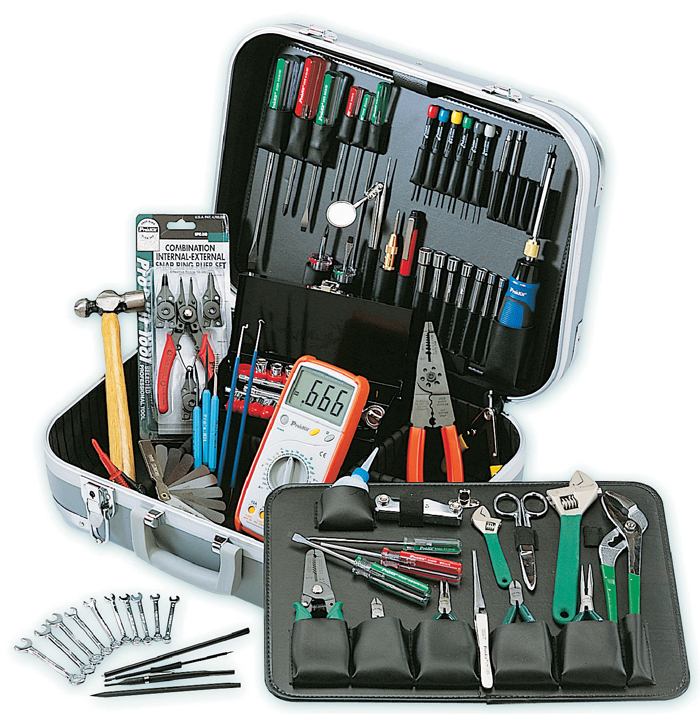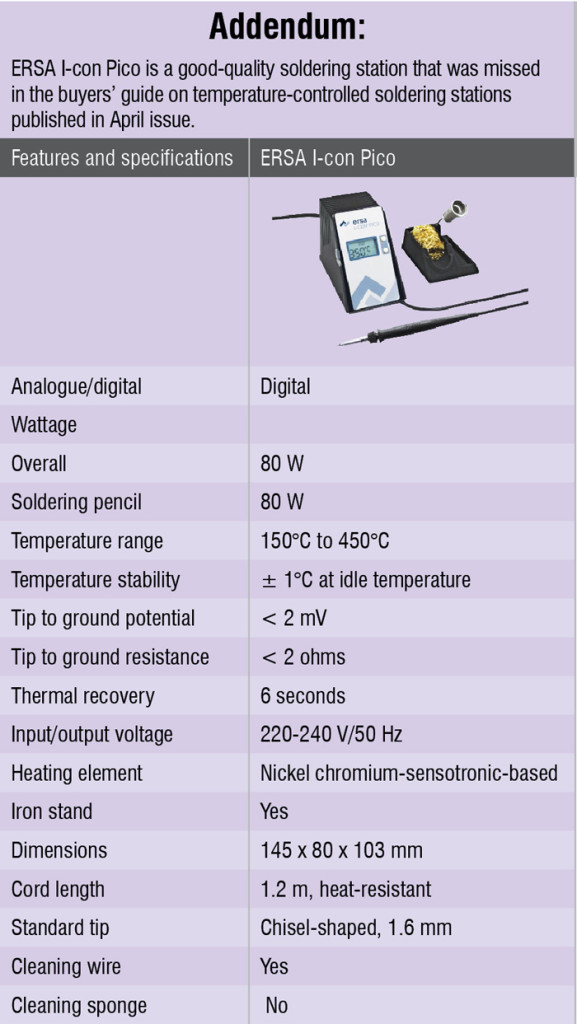There are several manufacturers around the globe producing high-quality electronics toolkits including all sorts of tools that you would ever need in your electronics career. There are also some suppliers who procure the best parts from different manufacturers and club them to make one single kit.

While buying a toolkit, make sure that it includes all the required tools of reasonable quality. In case the toolkit doesn’t meet your requirements, you would not want to buy another toolkit as it is expensive. So it is important that you make the right decision the first time.
The first thing you should look into is the list of tools in the toolkit. Broadly, there are four types of tools in every kit: measurement tools, soldering tools, hand tools and prototyping tools.
Measurement tools
 Normally, electronic toolkits don’t include sophisticated measurement tools. Expect very basic measurement tools like multimeter and LCR meter, which are included just for the sake of completeness. If you carry along the complete toolkit with you, even average-quality basic measuring instruments can be quite useful in many cases.
Normally, electronic toolkits don’t include sophisticated measurement tools. Expect very basic measurement tools like multimeter and LCR meter, which are included just for the sake of completeness. If you carry along the complete toolkit with you, even average-quality basic measuring instruments can be quite useful in many cases.
Digital multimeter. Digital multimeter is a measurement tool that is a part of almost all the toolkits. You definitely need one but multimeters included in toolkits are normally of not very good-quality. Toolkits with good-quality multimeters would be very expensive. Therefore buy a good-quality multimeter separately, and just get the quality of your other tools right.
We will not discuss multimeters in detail here as a buyers’ guide on digital multimeter has already been covered in EFY Feb. 2013 issue. Refer the buyers’ guide to understand the specs that you need to check before buying a digital multimeter.
Smart tweezers. This is a hand-held LCR meter, which is highly useful in identifying and testing basic SMD components. These tweezers are specifically designed to work with SMD components. SMD components are getting smaller and smaller, some of them being too small to be labelled. In that case, if an SMD component is out from the strip, you may not be able to identify which component it is. Smart tweezers are highly useful in such a case. They automatically detect the type of the component—resistor, capacitor or inductor—and indicate its value with accuracy.
Standard LCR meters come in shapes similar to that of multimeters, with cable probes connected to them. These meters are not very comfortable to work with SMD components. You cannot even touch and hold a 0603 package with these probes. But precise gold-plated tweezers are able to pick even the smallest SMD components and take measurements from already mounted devices.
Most toolkits do not include a smart tweezer but consider buying one to complete your toolkit. When buying a smart tweezer, look for below mentioned features that are found useful in electronics jobs:
Automatic identification. With this feature, smart tweezers automatically determine the type of the component—resistor, capacitor or inductor. This is really a handy feature when working with SMD components. It usually happens that several loose SMD components end up on your table after a project. You cannot distinguish these components easily through naked eyes and identifying the value of each component is almost impossible. If you simply pick and hold the component with a smart tweezer, it will automatically show the component type together with its accurate value.







how to purchase electronics toolkit